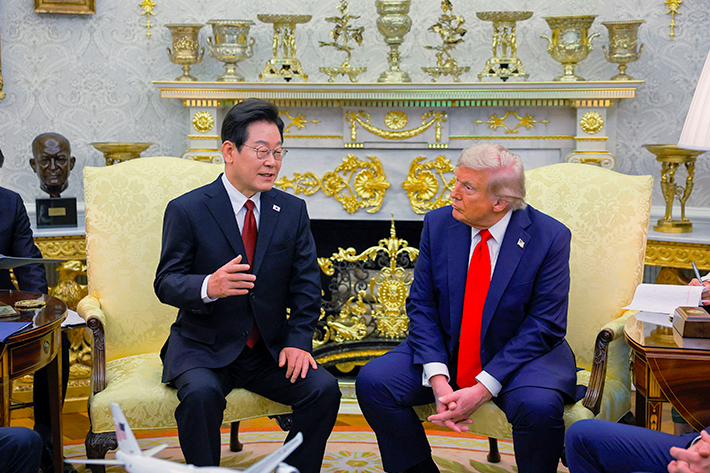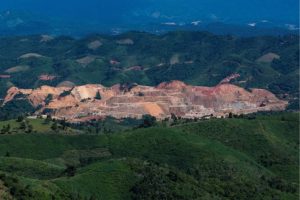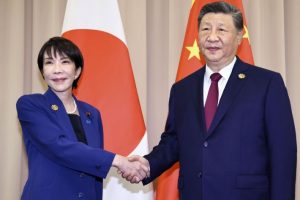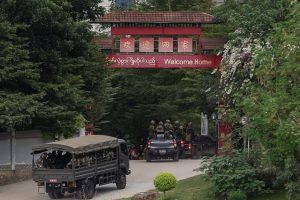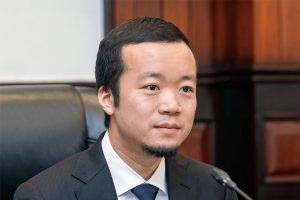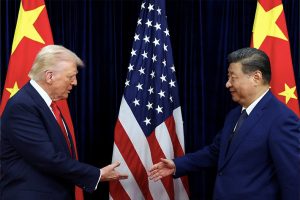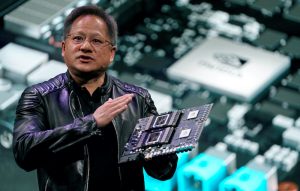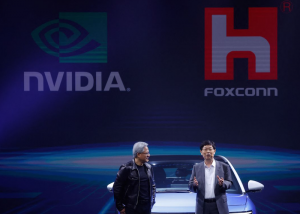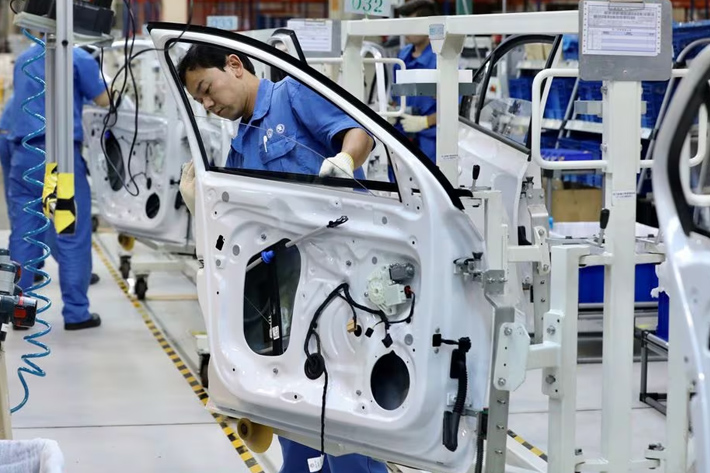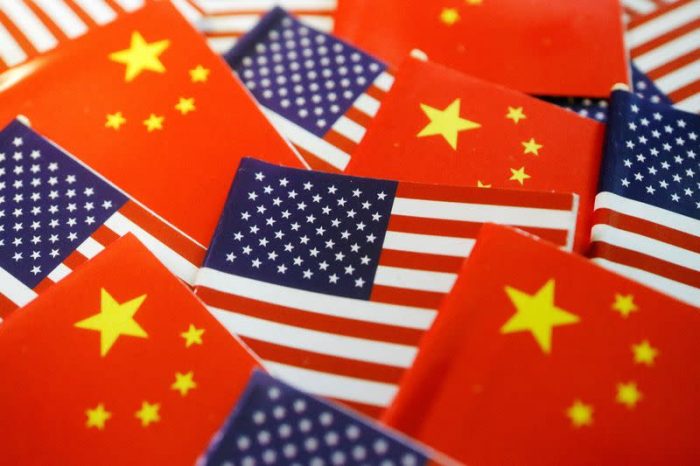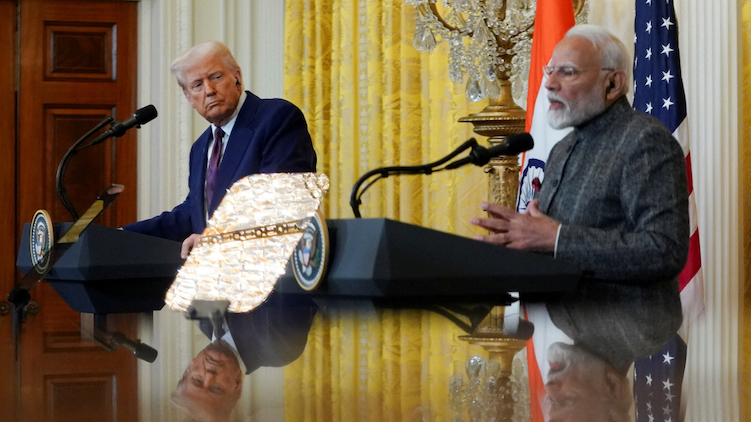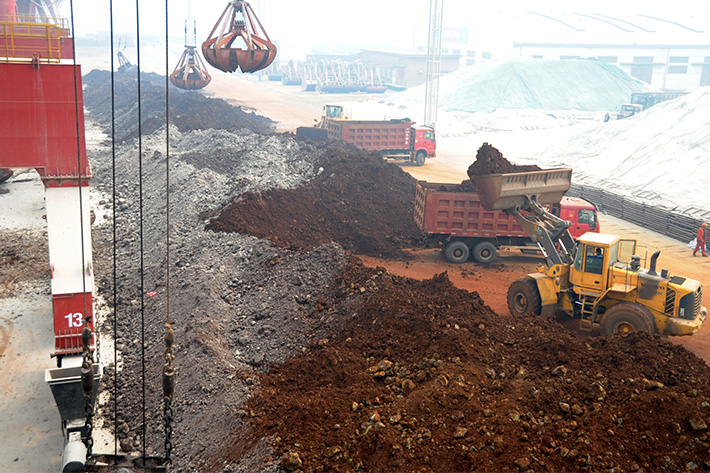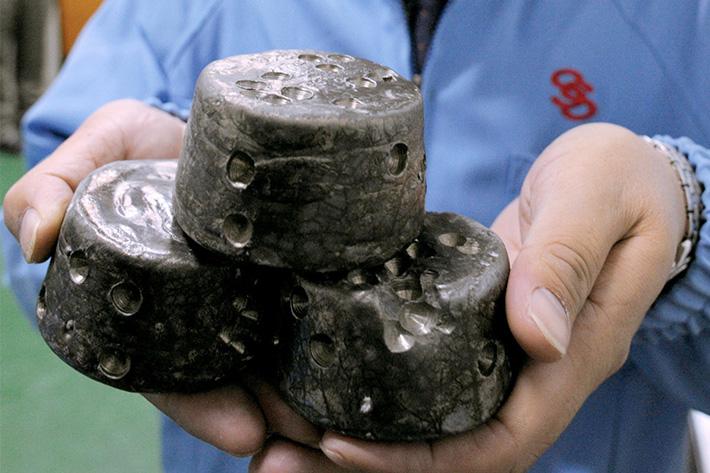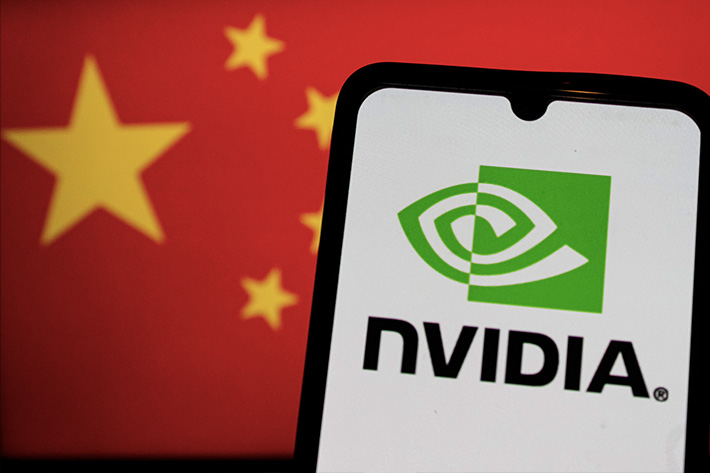US President Donald Trump’s summit with his South Korean counterpart Lee Jae Myung on Monday was another lively White House performance with a range of shocking, awkward, but fortunately, mainly warm remarks this time.
You never quite know what you’re going to get; such is Trump, now 79, back in the hot seat and rambling with little restraint at any dislike.
On Monday, it was Trump saying how much he’d like to meet again with North Korean leader Kim Jong Un, whom he met several times in his first term. And suggesting later that he and Lee should fly to China on a plane together.
ALSO SEE: China Emissions Fall In First Half But Global Climate Alarm Persists
“I’d like to have a meeting. I look forward to meeting with Kim Jong-un in the appropriate future,” Trump said during his session at the Oval Office with Lee, which appeared to go fairly well, despite the seemingly inevitable delicate moments given Trump’s previous remarks on South Korea.
Trump said he knew the authoritarian North Korean leader “better than anybody, almost, other than his sister .. some day I’ll see him. I look forward to seeing him. He was very good with me,” Trump told reporters, adding that he hoped another meeting could take place this year.
Later, in response to a Chinese reporter’s question, he said: “At some point, probably during this year or shortly thereafter, we’ll go to China,” according to an AFP report. “We’re going to have a great relationship with China.
“Maybe we will go together. Do you (Lee Jae Myung) want to go together? We can share a plane, we will save energy, we will save a little, ah, you know, the ozone.”
Lee, who, to his credit, had made considerable preparation for his big day in the spotlight, seemed to roll with the punches and was largely at ease despite a couple of awkward moments, including when Trump raised the idea of taking ownership of land that hosts a huge US military base in his country.
“We spent a lot of money building a fort, and there was a contribution made by South Korea, but I would like to see if we could get rid of the lease and get ownership of the land where we have a massive military base.”
Then Trump made remarks about China, repeating an earlier comment he made on Fox News – that 600,000 Chinese students would be allowed to study in the US.
That appeared to go down well in Beijing, with the Global Times noting on Tuesday that a “shift in tone” began in June, when Trump said that he had “always been in favour” of welcoming students from China.
Non-binding agreement on $350bn investments
Later, progress was made between Seoul and Washington on a non-binding agreement on how they will manage the $350 billion in funds that South Korea agreed to invest in the US as part of a tariff deal in July, a top South Korean official told Reuters.
Seoul agreed on a trade deal last month to cut US tariffs in exchange for pledging investments, but differences emerged on how the sides interpreted details of the plan, including how profits will be distributed.
Presidential policy adviser Kim Yong-beom said on Monday he held a separate meeting with US Commerce Secretary Howard Lutnick for two hours, and the two sides were making progress in broad terms. Kim said the US hoped to agree on a memorandum of understanding to oversee the investment plan as soon as possible.
The “financial package” will support strategic industries such as key minerals, batteries, chips, medical drugs, artificial intelligence and quantum computing, Kim said. He reiterated that up to $150 billion had also been earmarked for shipbuilding.
Seoul would create a task force to work on detailed implementation plans, led by the finance ministry and joined by state-funded banks, Kim said.
South Korean officials previously disputed Lutnick’s remarks, suggesting the US would take 90% of the profits from the investments. Officials in Seoul also said equity investments would account for a small part, while loans and guarantees would make up a majority of the funds.
In July, Trump said South Korea would invest in projects “owned and controlled by the United States” and selected by him.
South Korean officials have said a safety mechanism would be added to reduce financing risk, including US commitments to buy products from the projects and invest in commercially feasible projects.
Lee backs Trump engaging Kim Jong Un
A big thing for President Lee was avoiding what he called a “Zelenskiy moment” after Trump welcomed him to Washington with right-wing conspiracy theories. Monday’s summit was the first between the two leaders and largely what South Korea had hoped for, despite some concern at the start, officials and analysts said.
The South Koreans dodged their biggest fear: an Oval Office ambush similar to the testy exchange in February when Trump berated Ukraine’s Volodymyr Zelenskiy over US aid and the war with Russia.
“President Lee’s Oval Office press availability appeared to go better than expected,” said Leif-Eric Easley, professor of international studies at Ewha Womans University in Seoul, noting that Trump expressed support for Lee’s approach toward North Korea and enthusiasm for engaging Kim Jong Un.
Major questions remain over how much exactly South Korea will agree to pay for the basing of 28,500 American troops, and many details still being worked out in the hastily negotiated tariff agreement, which has yet to be put in writing.
But Lee avoided any clash that some observers feared could publicly fracture the long-term alliance at a time when North Korea is leaping forward with nuclear weapons and ballistic missile development, and deepening ties with Russia.
‘I read the president’s book’
A few hours before the pair was due to meet, Trump penned a social media post saying: “WHAT IS GOING ON IN SOUTH KOREA? Seems like a Purge or Revolution,” and saying he would raise the issue with Lee.
But Trump appeared to soften after 40 minutes in which Lee, who spoke through an interpreter, praised him and explained that investigators conducted a raid confined to the Korean side of a base operated jointly with the US in connection to the political crisis.
The US President later scaled back on his post, suggesting his earlier comments could have been “a misunderstanding.”
At a talk at the Center for Strategic and International Studies, after the summit, Lee said: “Before I met with President Trump today, he posted on Truth Social a very threatening post. My staff was worried that we might face a Zelenskiy moment.
“But I already knew that I would not face that kind of a situation; that’s because I had read President Trump’s book, ‘The Art of the Deal’.”
Some issues not addressed
But keeping things vague meant South Korea had policy goals that went unaddressed, including requests for US approval for nuclear fuel reprocessing and revising American laws on shipbuilding, one analyst told Reuters.
“Trump didn’t embarrass Lee and both sides seemed to try to avoid sensitive issues, such as South Korea’s political position in the tensions between China and Taiwan,” said Jun Kwang-woo, chairman at Institute for Global Economics. “Trump is probably not in a situation now to create tensions with Lee while he’s already under pressure with frictions with other countries.”
Yang Uk, of Seoul’s Asan Institute for Policy Studies, said Trump’s pressure on South Korea was a sign that he understands how much he can potentially gain from the country.
“(Trump’s) basic formula of first shaking the other person as much as possible, then getting what you want, was applied,” Yang said.
Lee said he had observed that in negotiations with other countries, Trump would often present difficult conditions, but at the final stage would come to a reasonable conclusion.
“And because of the importance of the Korea-US alliance, I was confident that he would not inflict a wound to our alliance,” Lee said. “Everybody gave me the advice to have patience.”
- Jim Pollard with Reuters and other inputs
NOTE: The headline on this report was changed and edits made on August 26, 2025.
ALSO SEE:
S Korea’s Lee Will Try to Pacify Trump With Big Shipbuilding Boost
S Korea to Invest $450bn in US Projects, Energy; Gets 15% Tariff
Tariffs Spur Big Tesla Deals With LGES Batteries, Samsung Chips
S Korea Forms Task Force to Speed up Trade Talks With US
South Korea Keen to Sell Submarines to Canada, Paper Says
CK Hutchison Ports Deal Deeply Entangled in US-China Trade War
Trump Plan to Revive US Shipbuilding, Cut Chinese Grip on Sector
US Probe Shows China Unfairly Dominates Shipbuilding: Sources
South Korea Crisis Deepens as Acting President Also Impeached




